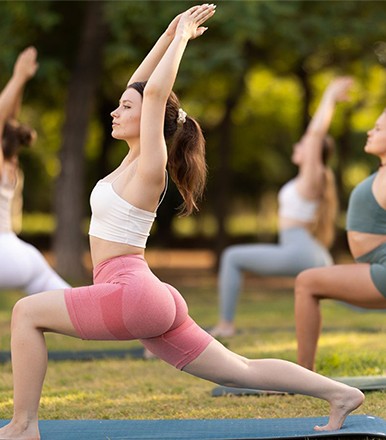The modern lifestyle exposes our eyes to unprecedented levels of strain. Digital screens, artificial lighting, and extended periods of close-focus work create visual stress that can contribute to deteriorating eyesight over time. While corrective lenses address symptoms, certain eye exercises might help maintain ocular health and potentially slow vision deterioration. These exercises strengthen eye muscles, improve blood circulation to the eyes, and reduce strain - requiring just minutes daily but potentially offering significant benefits when practiced consistently.
1. Palming Technique

This restorative technique allows overtaxed eyes to completely relax and recover from strain.
How to do it:
Vigorously rub hands together until they generate warmth
Form cupped palms and place them over closed eyes without pressing on eyeballs
Create complete darkness by eliminating light leakage through fingers
Breathe deeply while maintaining the position for 30-60 seconds
Allow the warmth to transfer from palms to eye muscles
The darkness created provides temporary but complete rest for the visual system. This technique proves particularly beneficial after extended periods of intense visual focus. Practitioners report immediate relief from eye strain symptoms. The technique originated in ancient healing practices but gained scientific attention when stress-related vision issues became more prevalent.
2. Eye Rolling

This movement exercise strengthens extraocular muscles responsible for eye movement and helps maintain flexibility.
How to do it:
Maintain a comfortable seated position with straight neck alignment
Without moving the head, rotate eyes in a clockwise circular motion
Create the largest possible circular rotation, extending fully in all directions
Complete 5-10 clockwise rotations
Rest briefly (10 seconds)
Perform equal rotations counterclockwise
Maintain normal blinking throughout
Regular practice helps counteract the effects of prolonged fixed-distance focusing. Most modern work requires sustained focus at a single distance, causing certain eye muscles to become overdeveloped while others weaken. This exercise promotes balanced muscle development. Morning and evening practice sessions prove most effective for maintaining muscle tone and flexibility.
3. Near and Far Focus

This technique strengthens the ciliary muscles controlling lens accommodation - crucial for switching focus between distances.
How to do it:
Position thumb approximately 10 inches from face
Focus directly on thumb for 5 seconds, noting fine details
Locate an object at least 10-20 feet away
Shift focus to the distant object, holding for 5 seconds until clear
Return focus to thumb
Alternate between near and far objects 10 times
Incorporate blinking between shifts to maintain lubrication
The focusing mechanism operates through tiny ciliary muscles that contract and relax to change lens shape. Modern lifestyles often lock these muscles into near-focus positions for hours, leading to accommodation problems. Research suggests regular practice helps maintain focusing flexibility. The exercise proves particularly beneficial for people experiencing difficulty transitioning between reading and distance viewing.
4. 20-20-20 Rule

Image credit to - Oscar
This preventative strategy interrupts prolonged near-focus work to reduce digital eye strain.
How to do it:
Set a 20-minute timer during screen-based activities
Look at something approximately 20 feet away when the timer signals
Focus on the distant object for 20 seconds
Perform several complete blinks during this period
Include neck and shoulder stretching to release tension
Return to previous activity
Ophthalmologists widely endorse this technique specifically for preventing computer vision syndrome. Studies show blink rates typically drop from 15-20 per minute to 5-7 during screen use, contributing to dry eye issues. Regular distance viewing breaks reset focusing muscles and encourage natural blinking. Implementation through reminder apps or browser extensions helps establish this protective habit.
5. Figure 8 Movement

Image credit to - Clear eye Sight
This tracking exercise enhances smooth pursuit eye movements essential for reading and scanning activities.
How to do it:
Select a reference point on the floor approximately 8 feet away
Visualize a large horizontal figure 8 pattern on the floor
Trace the imaginary pattern with eyes only, maintaining head stability
Continue tracing in one direction for 30 seconds
Reverse direction and continue for another 30 seconds
Maintain relaxed breathing throughout
The exercise develops coordination between both eyes and improves the fine motor control needed for tracking moving objects or lines of text. Smooth tracking movements rely on complex coordination between six extraocular muscles. Poor tracking often contributes to reading difficulties and eye fatigue. Some vision therapists vary the exercise by changing the pattern size or orientation to challenge different muscle coordination patterns.
6. Blinking Exercise

Image credit to - helloeyelab
This technique addresses insufficient blinking - a primary contributor to computer-related dry eye syndrome.
How to do it:
Close eyes completely
Apply gentle pressure for one second
Open and relax for two seconds
Repeat sequence 10 times
Perform hourly during extended screen use
Complete blinking serves essential functions: it distributes fresh tears across the eye surface, removes irritants, and spreads protective lipids that prevent tear evaporation. Recent studies demonstrate that deliberate blinking exercises significantly improve dry eye symptoms. The exercise retrains natural blinking patterns that become disrupted during concentrated visual tasks. Some specialists recommend adding gentle eyelid massage to stimulate the meibomian glands responsible for producing the tear film's protective oil layer.
7. Eye Press & Release

Image credit to - Evoicl
This circulation technique temporarily relieves pressure and enhances blood flow to ocular tissues.
How to do it:
Close eyes completely
Position middle three fingers lightly on each eyelid
Apply very gentle pressure for 3 seconds
Release completely for 3 seconds
Repeat sequence 5 times
Finish with 30 seconds of palming
The gentle pressure and release creates a pumping action that potentially improves circulation to external eye structures. Proper blood flow ensures adequate oxygen and nutrients reach eye tissues while removing metabolic waste products. This technique should never involve pressing directly on the eyeball. Some practitioners suggest synchronizing the pressure-release cycle with slow breathing to enhance relaxation effects.
Conclusion
Regular practice of these eye exercises may help maintain visual function and reduce eye strain symptoms. While they cannot replace necessary corrective lenses or medical treatment, these exercises offer a complementary approach to eye care that addresses the physiological stress of modern visual demands. Consistent short practice sessions yield better results than occasional longer ones. Consult an eye care professional before beginning these exercises if you have existing eye conditions.
Check out Hello Fitness Magazine. There is never a wrong time to go on a fitness quest. Contact us and allow us to assist you in leading a better lifestyle. Follow us on Instagram. We share the best Health & Fitness related Articles for information based on healthy eating, health and fitness recommendations, health problems and their solutions, human body fitness, and much more.














